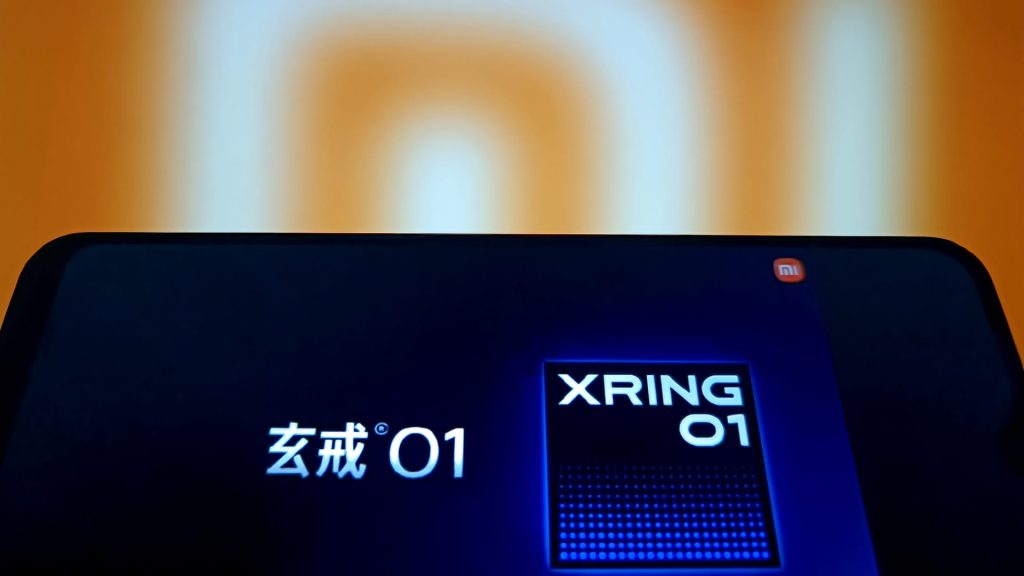In a bold move to compete with Apple, Chinese smartphone giant Xiaomi is unveiling its latest innovation – the Xring O1 chip, designed to power its new Xiaomi 15S Pro smartphone. Priced competitively at 5,499 yuan ($764), the smartphone stands out among premium Apple offerings, which begin at a higher price point. Xiaomi’s CEO, Lei Jun, asserts that their chip technology not only rivals Apple’s A18 Pro but also enhances performance, particularly in gaming.
| Article Subheadings |
|---|
| 1) Competing Head-to-Head with Apple |
| 2) Xiaomi’s New Chip: The Xring O1 |
| 3) The Power of Pricing Strategy |
| 4) Future Investments in Chip Development |
| 5) Expanding Beyond Smartphones |
Competing Head-to-Head with Apple
Xiaomi has positioned itself as a formidable competitor in the smartphone market, particularly against Apple. The release of their Xiaomi 15S Pro smartphone comes at a time when many consumers are seeking more affordable alternatives without compromising on technology. The potential overlap in target demographics indicates a highly competitive landscape. Lei Jun, during a recent launch event in Beijing, acknowledged Apple’s dominance but emphasized that Xiaomi’s new offerings represent significant advancements in technology. The intent is not merely to challenge Apple directly but to highlight Xiaomi’s capabilities in producing comparable devices.
Xiaomi’s New Chip: The Xring O1
The Xring O1 chip signifies a substantial advancement for Xiaomi. According to Lei Jun, this chip is built on a cutting-edge 3-nanometer process, similar to Apple’s A18 Pro chips, but with enhanced capabilities. He detailed how the Xring O1 excels at maintaining lower heat levels, ensuring smoother gaming experiences. While independent verification of these claims remains pending, the potential implications for the gaming sector are notable. Xiaomi’s commitment to chip development has grown significantly since they began in 2014, showcasing a long-term vision in ownership of core technology rather than dependence on outside suppliers. This vertical integration is seen as crucial to enhancing both performance and profitability.
The Power of Pricing Strategy
Price remains one of Xiaomi’s strongest advantages. The Xiaomi 15S Pro is priced at 5,499 yuan ($764), making it not just more affordable than the iPhone 16 Pro, which starts at 7,999 yuan ($1,090), but also eligible for a discount thanks to state subsidies aimed at boosting consumer spending. This strategic pricing is a response to the challenges posed by premium brands and aligns with the company’s goal to attract a broader customer base. Analysts suggest that while the market has long associated premium prices with high-quality products, Xiaomi’s approach may reshape customer perceptions around value, prompting them to consider the features offered without the premium price tag traditionally aligned with brands like Apple.
Future Investments in Chip Development
Xiaomi’s long-term strategy includes a commitment to investing 200 billion yuan in research and development over the next five years, starting in 2026. This ambitious plan aims to establish Xiaomi as a leader in not just smartphones, but advanced chip manufacturing as well. Strong ownership over chip production allows the company greater flexibility in innovation and pricing strategies. Lei Jun highlighted the ongoing mass production of the Xring O1, reflecting Xiaomi’s readiness to become more self-reliant in technology. With a staggering 50 billion yuan ($6.9 billion) earmarked for chip development over the next decade, the company is clearly preparing for a significant shift in competition, especially in light of U.S. restrictions affecting access to high-end semiconductor technology.
Expanding Beyond Smartphones
Xiaomi’s ambitions extend beyond smartphones into the automotive sector, evidenced by recent product launches. Earlier this spring, the company introduced the SU7 electric sedan, priced significantly lower than Tesla’s offerings. In addressing competition from emerging automotive players, Lei Jun remarked on the testing of Xiaomi’s vehicles by industry leaders, further legitimizing its place in an evolving market. The upcoming release of its first SUV, the YU7, slated for July, underscores the company’s vision of becoming a multifaceted technology provider. The YU7 is reported to utilize Qualcomm’s Snapdragon and Nvidia’s Thor chips, marking Xiaomi’s strategic partnerships with leading technology firms.
| No. | Key Points |
|---|---|
| 1 | Xiaomi is launching the Xring O1 chip to enhance its smartphone performance and reduce reliance on third-party chips. |
| 2 | The Xiaomi 15S Pro is priced at 5,499 yuan, significantly cheaper than Apple’s iPhone models. |
| 3 | Xiaomi plans to invest 200 billion yuan in R&D over five years, strengthening its position in the chip market. |
| 4 | The company sees potential revenues from electric vehicle sales with its recent product launches. |
| 5 | Xiaomi’s strategy includes aggressive pricing and technology ownership, reshaping market dynamics. |
Summary
Xiaomi’s introduction of its Xring O1 chip and the competitively priced Xiaomi 15S Pro marks a significant step in their quest to rival Apple and establish a stronghold in both the smartphone and automotive sectors. With large investments in research and development, the company aims to solidify its innovation leadership and create value for consumers that challenges traditional price perceptions in the market. This strategic ambition could redefine competitive dynamics, positioning Xiaomi as a resourceful player in the technology landscape.
Frequently Asked Questions
Question: What is the Xring O1 chip?
The Xring O1 chip is Xiaomi’s latest processor designed to power its new Xiaomi 15S Pro smartphone, featuring advanced capabilities aimed at competing directly with Apple’s A18 Pro chip.
Question: How does the pricing of the Xiaomi 15S Pro compare to Apple’s iPhone models?
The Xiaomi 15S Pro starts at 5,499 yuan ($764), considerably cheaper than Apple’s iPhone 16 Pro, which begins at 7,999 yuan ($1,090), making the Xiaomi model more accessible to a broader range of consumers.
Question: What future plans does Xiaomi have related to chip development?
Xiaomi plans to invest 200 billion yuan in research and development over the next five years to enhance its chip manufacturing capabilities and reduce reliance on outsourced technology.
